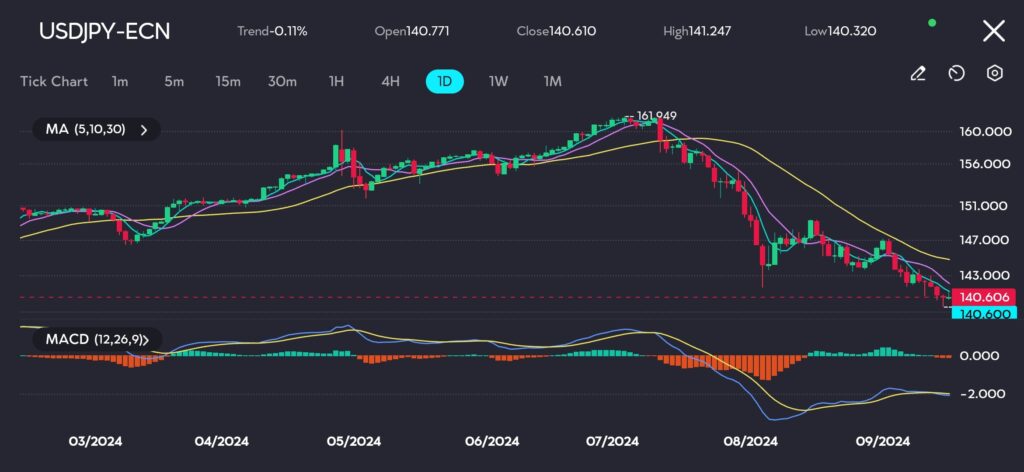Key points:
- Fed expected to begin U.S. easing cycle, while Bank of Japan signals potential rate hikes.
- Yen gains 12% since July as gap between U.S. and Japanese rates narrows by 130 basis points.
Tokyo’s markets reopened on Tuesday after a long weekend, but traders appeared hesitant to push the yen back toward the strong 140 per dollar mark. Earlier, low liquidity had driven the yen briefly beyond this level.
However, the dollar/yen pair and the 140 milestone remain a central focus this week, as the U.S. Federal Reserve prepares for an easing cycle and the Bank of Japan (BOJ) considers its own interest rate adjustments.
Expectations for a substantial 50-basis-point rate hike by the Federal Reserve on Wednesday have grown, with market pricing rising to 67% on Tuesday, up from 30% the previous week. This shift in sentiment signals increasing anticipation of a dovish stance from the Fed, especially as concerns over inflation and economic resilience mount.
In early July, the yen hit a 38-year low against the dollar but has since made a strong recovery, appreciating by over 12%.
See also: Yen poised for best weekly gain in three months as carry trades unravel

SEE: Yen strengthening against the USD since mid-July 2024 on the VT Markets app.
Looking at the charts, the USDJPY pair continues to trend lower, closing at 140.610 after hitting an intraday low of 140.320. The price action has been steadily declining since early July when the pair peaked around 161.049. The consistent move below the major moving averages (MA 5,10,30) indicates sustained bearish pressure.
The 5-day moving average crossed below the 10-day and 30-day averages in late August, further confirming the downward momentum.
Looking at the MACD (12,26,9), the histogram shows bearish divergence, with the MACD line sitting below the signal line, further indicating weakness. The momentum bars are extending into negative territory, reflecting an increase in bearish sentiment. This signals a continued downside trend for the pair unless momentum changes.
Support is seen near the psychological level of 140.00, a key area to watch for possible consolidation or a break lower. Should price action break below this level with significant volume, the next support could emerge around 138.50.
On the upside, resistance is found around 142.00, but unless the pair breaks back above the 30-day moving average, any potential reversal may be short-lived.
Given the upcoming Federal Reserve and Bank of Japan meetings, any dovish stance from the Fed, combined with a potential hawkish move from the BOJ, could further fuel yen strength, causing USDJPY to break below 140.00 decisively.
Rate differential between bonds
This sharp rise followed a significant narrowing of the rate differential between U.S. and Japanese two-year government bonds by 130 basis points over an 11-week period.
Should the Federal Reserve signal a dovish outlook while the Bank of Japan takes a hawkish stance, the yen could push through the 140 level once more.
This would likely pave the way for the yen to challenge its January high of 127.215 per dollar. Such a move could trigger Japanese corporations, which have built in higher exchange rate assumptions, to shift into buying mode. This would further boost the yen’s momentum.
The effect on Japanese equities has been more cautious, with the Nikkei index falling by 1.7% as concerns about the yen’s strength loom over exporters.
Focus remains on expected rate cut
Despite these indicators, traders are likely to focus more on the size of the Federal Reserve’s expected rate cut and its forward guidance. The markets are trying to assess how these moves will shape economic data in the coming weeks.
BlackRock’s research division suggests that the U.S. economy’s resilience might lead to shallower rate cuts than the 250 basis points that traders have currently priced in for the next 12 months.









